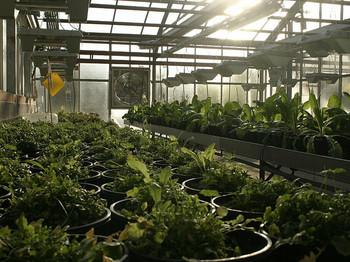PIE Project
Evolutionary transitions and the diversification of protein-protein interaction networks
![[Translate to English:] Logotype du CDP PIE](/fileadmin/_processed_/e/e/csm_CrossDisciplinaryProjectLabs_logoPIE-noir_RVB_3a77af67b6.png)
The Protein-Interaction-Evolution (PIE) project aims to explore the role of protein-protein interactions in the evolution of biodiversity. By examining different levels of biological organization, the project seeks to understand how molecular interactions emerge, change, and diverge over the course of evolution—ultimately contributing to the remarkable diversification of life and the emergence of new species.
In figures
in funding from the Initiative of Excellence
Project duration - renewable
The PIE strategy: understanding the project
![[Translate to English:] Image illustrative : biodiversité](/fileadmin/_processed_/3/5/csm_AdobeStock_418128663_1750ac2af5.jpeg)
Insufficiently researched interactions
The living world is under constant evolution at different scales of organization, from single molecules to entire species. The emergence of new species and the acquisition of key functional novelties represent major transitions at the heart of this fundamentally continuous biological process. Ultimately, these transitions rely on modifications of molecular interactions within or between individuals, but the way these changes occur remains poorly documented.
The project is structured around several research areas: genome analysis, bioinformatics, structural biology, and algorithmics. PIE brings together multiple laboratories and thematic hubs to integrate multi-omics data and develop new bioinformatics tools.
Key scientific questions include the emergence of new genes, the formation of protein complexes, and the molecular barriers between species. Leveraging advanced technologies such as AlphaFold2, the project aims to accurately predict protein structures and interactions—paving the way for new insights into species evolution and biodiversity mechanisms.
Answering these scientific challenges requires large-scale modeling of the biophysical (3D) structure of proteins, as well as modeling and measuring their biochemical ability to form stable interfaces—both of which remain major methodological challenges despite recent significant advances.
In addition, large-scale studies of these co-evolutionary processes across a wide range of species call for cutting-edge algorithmic developments to enhance 3D structure comparison between proteins and to optimize the use of protein sequence databases within genomes.
Find out more about research areas
New Proteins
- Integration of new protein-coding genes in genetic networks.
New interactions
- The formation and diversification of protein interfaces
New species
- The build-up of molecular incompatibilities
New tools
-
Development of innovative bioinformatics methods and tools
At a glance
The PIE project focuses on the analysis of protein interactions, aiming to shed light on the processes by which evolutionary innovations and major transitions occur in the living world. At a time when biodiversity is eroding at an unprecedented rate, its societal relevance lies in understanding the mechanisms by which living species evolve and diversify, providing crucial knowledge to address current environmental challenges.
![[Translate to English:] Logotype de CRIStAL](/fileadmin/user_upload/initiative-excellence/images/Projets_Recherche/CALYPSO/Cristal_logo.svg)
![[Translate to English:] Logotype du laboratoire MSAP](/fileadmin/_processed_/c/d/csm_logo_MSAP_1_daf485757e.jpg)
![[Translate to English:] Logotype de l'unité EEP](/fileadmin/_processed_/6/c/csm_header_eep2-1_8a6a81f8e5.jpg)
![[Translate to English:] Logotype de l'UGSF](/fileadmin/_processed_/4/7/csm_ugsf_logo_4bb2dc06ad.jpg)

![[Translate to English:] Logotype de la plateforme Bilille](/fileadmin/_processed_/9/e/csm_bilille_52ac45c347.png)
![[Translate to English:] Logotype de la plateforme MS4OMICS](/fileadmin/_processed_/b/f/csm_ms4omics_df816ba124.jpg)
![[Translate to English:] Partenaire [Translate to English:] Accès au site du partenaire : CNRS](/fileadmin/_processed_/0/5/csm_cnrs_56c3662e4f.png)
![[Translate to English:] Partenaire [Translate to English:] Accès au site du partenaire : INRAE](/fileadmin/user_upload/initiative-excellence/images/partenaires/inrae.svg)
![[Translate to English:] Partenaire [Translate to English:] Accés au site du partenaire : CHU](/fileadmin/_processed_/8/7/csm_Logo_CHU_de_Lille_089a7ac546.png)
![[Translate to English:] Partenaire [Translate to English:] Accès au site du partenaire : Centrale Lille](/fileadmin/_processed_/1/3/csm_centrale_lille_e36ec71030.png)